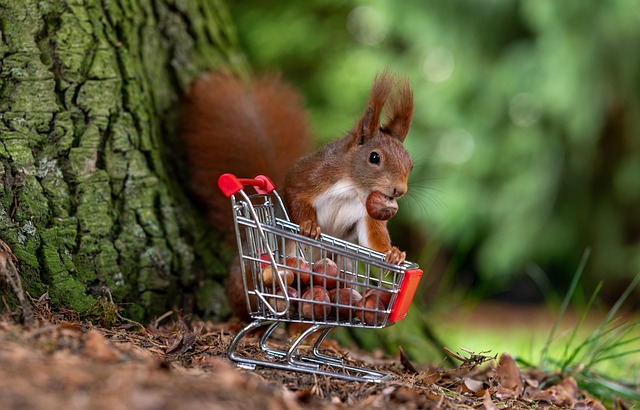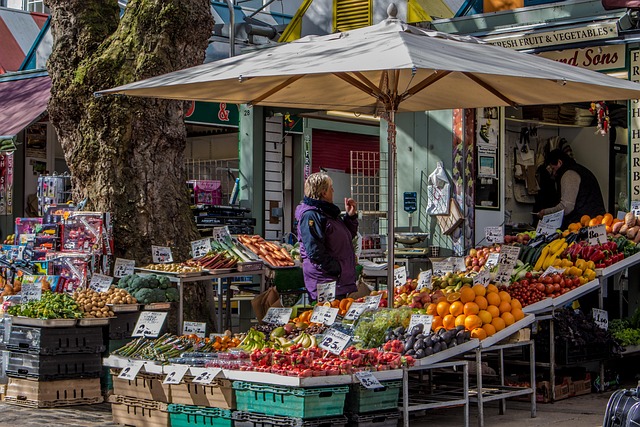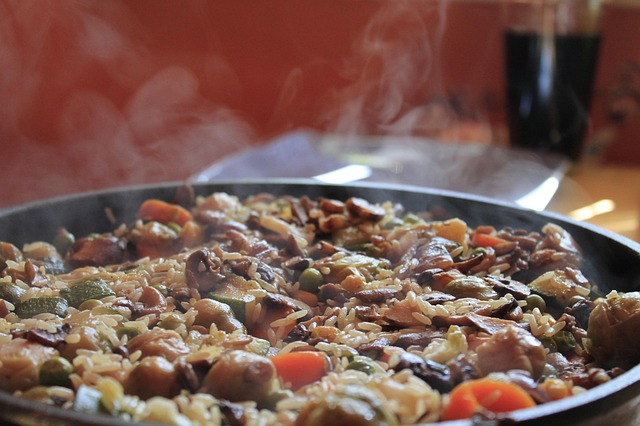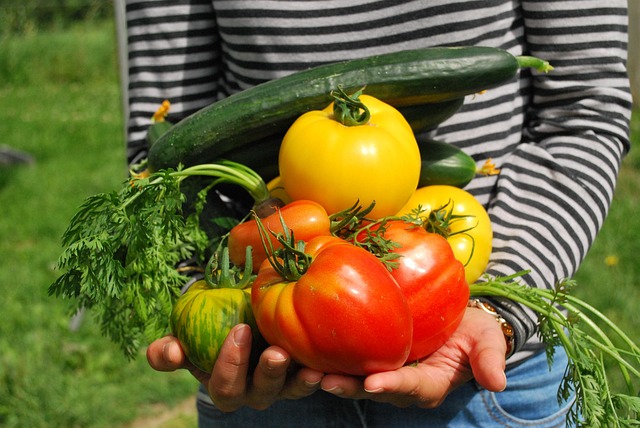We’ve all felt the pinch of rising food prices. It seems like with every visit to the supermarket, your usual buys have crept up in price yet again. Not only is this worrying for families on a budget, but quite often some of that food ends up in the bin before it’s eaten. But, the good news it that with a few simple changes, you can make your grocery budget go further, waste less, and still enjoy tasty, healthy meals.
These tips aren’t about cutting corners or living on beans on toast (unless you love beans on toast). It’s about shopping smarter, making thoughtful choices, and getting the best value from what you buy.

Let’s take a look at some practical ways to help you buy smart and waste less.
1. Plan Before You Shop
One of the biggest mistakes I make when going shopping is to just have a rough idea in my head about what I need, and what to have for dinner for the next two days. Needless to say, I end up returning to the supermarket a couple of day later (or even the next day) to buy something that I forgot. Not only does this lead me to spend more as I’ll usually get a couple of extra bits, but it wastes fuel too.
Before you even think about going to the shops, take ten minutes to look through your cupboards, fridge, and freezer. Make a list of what you already have and what needs to be used. This way, you can plan your meals for the week around those ingredients. For example, if you have a bag of carrots that need eating and a few eggs, you could plan to make a veggie quiche or flan.
Once your meals are sorted, write a shopping list and stick to it. This keeps you focused and helps you avoid those tempting impulse buys that sneak into your shopping trolley!
Pro tip: Try planning one or two “flexible meals” each week, where you can use whatever’s left in the fridge. Stir-fries, omelettes, or pasta dishes work well for this.
2. Shop Seasonally and Locally
Buying seasonal produce is a win-win. It not only supports local farmers but it usually costs less because the food is more available. Seasonal fruits and vegetables also tend to taste better, as they haven’t traveled long distances to reach your plate.
In the UK, strawberries are at their best (and cheapest) in summer, while root vegetables like carrots and parsnips are more affordable in winter.
If you can, visit local markets or farm shops. You’ll often find good deals on fresh, loose produce and the ability to buy exactly what you need—no pre-packaged portions forcing you to buy more than necessary.
3. Buy Loose Fruit and Veg
If you always stick to a supermarket, buying loose fruit and vegetables is one of the easiest ways to save money and cut down on waste. Pre-packed bags often contain more than you need, leading to forgotten apples or sprouting potatoes in the back of the cupboard. While it might seem counter-intuitive to buy a pepper for 65p, compared to £1.30 for four, if you only usually use one before they go off then you are actually wasting money by going for the higher quantity deal.
When you buy loose, you control the quantity. Need just two onions or three bananas? No problem. It’s also often cheaper per kilo, and you avoid unnecessary plastic packaging.
Bonus tip: Don’t shy away from “wonky” fruit and vegetables. They taste the same and usually come at a discount. Many supermarkets now have “imperfect” produce ranges that are both affordable and better for the environment.

4. Compare Prices (and Don’t Be Fooled by Labels)
Supermarket shelves can be confusing, especially with all those “special offers” and “multibuy” deals. Always check the unit price, which is usually listed in small print on the shelf label, rather than the overall price.
For example, a large tub of yogurt might look more expensive than a smaller one, but the price per 100g could actually be much lower. Similarly, two-for-one deals can seem tempting but may encourage you to buy more than you can use before it spoils.
Tip: Store brands and “own label” ranges are often made by the same manufacturers as the premium brands, but at a fraction of the cost. Test them out… you might be surprised by how little difference there is in taste.
5. Don’t Shop When You Are Hungry
This one sounds simple, but it’s a game-changer. Shopping when you’re hungry makes you much more likely to buy things you don’t need, especially snacks, treats, or ready meals that add up quickly.
Have a snack or meal before heading to the store, and you’ll find it easier to stick to your list and make sensible choices.
6. Store Food Properly
A lot of food waste happens because items spoil before we get to use them. Learning how to store food properly can make a big difference.
- Fruit and veg: Keep them in the right conditions. Some prefer the fridge, while others do better at room temperature. For example, bananas, onions, and potatoes should be stored in a cool, dark place, not in the fridge.
- Bread: Freeze half the loaf if you won’t use it right away. You can toast slices straight from frozen.
- Leftovers: Store in airtight containers and label them with dates. This helps you see what needs to be eaten first.
There are also other ways you can increase the shelf life of the produce you buy, as shown in our post How to Keep Fruit and Vegetables Fresher for Longer.
7. Cook from Scratch (Whenever You Can)
Ready meals and pre-prepared foods are convenient but often cost much more per portion than cooking from scratch. Simple homemade meals can be cheaper, healthier, and surprisingly quick.
For example, a homemade pasta sauce using canned tomatoes, garlic, and herbs costs much less than a jarred version—and you can make a bigger batch to save for later.
Cooking in bulk and freezing portions is another great money-saver. It reduces waste, saves time, and means you always have a meal ready for busy days.
Quick idea: Make a big pot of soup on the weekend using leftover vegetables. Portion it into containers and freeze. You’ll have ready-to-go lunches all week for pennies.

8. Get Creative with Leftovers
Think of leftovers as ingredients, not scraps. Yesterday’s roast chicken can become today’s curry or sandwich filling. Extra rice can be transformed into egg fried rice for the next day, or stuffed into peppers.
Even small amounts can add up to something new. For example, leftover cooked vegetables can bulk up an omelette, and slightly stale bread can be made into croutons, added to stiffing mixes or seasoned breadcrumbs.
If you’re ever stuck for inspiration, search for “leftover recipes” online or use sites where you input what you have, and they’ll suggest meal ideas.
9. Embrace the Freezer
Your freezer is one of your best tools for saving money and reducing waste. Most foods can be frozen, giving you the option to buy in bulk when there’s a good deal.
- Freeze food before it spoils. Got a bag of spinach that’s starting to wilt? Put it in the freezer for smoothies or soups.
- Cook once, eat twice. Double up on recipes like chili, casseroles, or pasta sauces and freeze half for another day.
- Freeze staples. Herbs, cheese, bread, and even milk can be frozen and used later.
Just remember to label everything with the date and name so you can keep track easily.
10. Make the Most of Loyalty Schemes and Discount Apps
Most supermarkets offer loyalty cards that give you access to discounts, points, or vouchers, and this can be a great way to save money on food bills. These can add up to real savings over time, especially if you shop regularly at the same place.
You can also use food waste apps like Olio (for sharing surplus food) or Too Good To Go (for picking up discounted meals and groceries from local shops). These not only save money but also help reduce waste in your community.
11. Understand “Use By” vs “Best Before”
Many people throw away perfectly good food because they misunderstand date labels.
- Use by dates are about safety – don’t eat food after this date unless it’s been frozen before the deadline.
- Best before dates are about quality – the food might not be at its best, but it’s usually still safe to eat.
Trust your senses when decided whether something is still good to eat or not. Check the look, smell, and taste before throwing something out. If it seems fine, it probably is.
12. Grow a Little of Your Own
Even if you don’t have a garden, you can grow small things like herbs on your windowsill or salad leaves in pots. It’s inexpensive, satisfying, and helps reduce waste since you only pick what you need.
Fresh herbs, in particular, can be pricey at the supermarket—and they often wilt before you finish the pack. Growing your own saves money and adds freshness to your cooking. We have a large selection of growing guides on Let’s Grow Wild, from your basic everyday fruit and veg to more exotic items. Check them out here.

13. Cook Once, Eat Twice
Planning meals that can be repurposed later in the week is a clever way to make your food (and money) go further. Roast vegetables one night, then use the leftovers in wraps, salads, or soups the next day.
Batch-cooking also helps reduce the temptation to order takeout when you’re tired. If you have a homemade curry or stew in the freezer, dinner is sorted and there’s no delivery fees, no wasted food, and no guilt.
14. Make Simple Swaps
Sometimes small changes make a big difference.
- Swap branded cereals for store versions.
- Choose frozen vegetables instead of fresh if they are cheaper and last longer.
- Try plant-based proteins like lentils or beans for some meals—they’re healthy and cost-effective. Chickpeas are particularly good in curries!
These swaps may seem minor, but over a month, the savings really add up.
15. Track What You Throw Away
If you want to get serious about cutting waste, spend a week noting what you throw away and why. You might notice patterns—maybe you always forget to use fresh herbs, or you buy too much salad. For me, I always end up throwing away half an iceberg lettuce. So, instead I pay about 20p more for a bag of spinach to put in sandwiches, which tends to last longer. Plus, it has more nutrients.
Once you identify these habits, you can adjust how much you buy or how you store things. Even small improvements can lead to big savings over time.
16. Simplify Your Shopping Routine
Finally, keep your shopping straightforward. Stick to familiar stores, know where the best deals are, and go with a plan. The less time you spend wandering aisles, the less likely you are to overspend.
Shopping once a week, if you can, can help you stay organized and avoid multiple small trips that lead to impulse buys.
Final Thoughts
Saving money on food doesn’t mean sacrificing quality, flavour, or enjoyment. It’s about being mindful by knowing what you need, using what you have, and appreciating the food that ends up on your plate.
When you buy smart and waste less, you’re not just cutting costs. You are also making a small but meaningful difference to the planet. Every meal you plan, every portion you save, and every bit of food you keep out of the bin adds up.
So, next time you go shopping, take a moment to plan ahead, buy thoughtfully, and make the most of what’s already in your kitchen. With a few simple habits, you’ll find that saving money on food bills and reducing waste go hand in hand, and your wallet will thank you for it.
